
The world’s oldest hockey stick
Where you’ll find it: Canadian Museum of History, Gatineau, Quebec
Hand-hewn in the 1830s from a single piece of sugar maple, this humble-looking stick is actually a unique Canadian artifact—and a priceless piece of hockey history. Passed down through generations of the Moffatt family of Cape Breton, it was gifted to a Nova Scotia barbershop owner in 1980. It hung on the shop wall for 25 years before it was sold to a collector and later purchased by the museum.

A deck chair from the Titanic
Where you’ll find it: Maritime Museum of the Atlantic, Halifax
Only eight wooden deck chairs recovered from the doomed RMS Titanic are known to exist. Pulled from the ocean, this chair was presented to Reverend Henry W. Cunningham of Halifax, a minister aboard the body recovery ship CS Minia in recognition of his work providing sea burial services. It was donated to the museum by one of his grandsons.
Read up on the most famous shipwrecks in Canadian history.
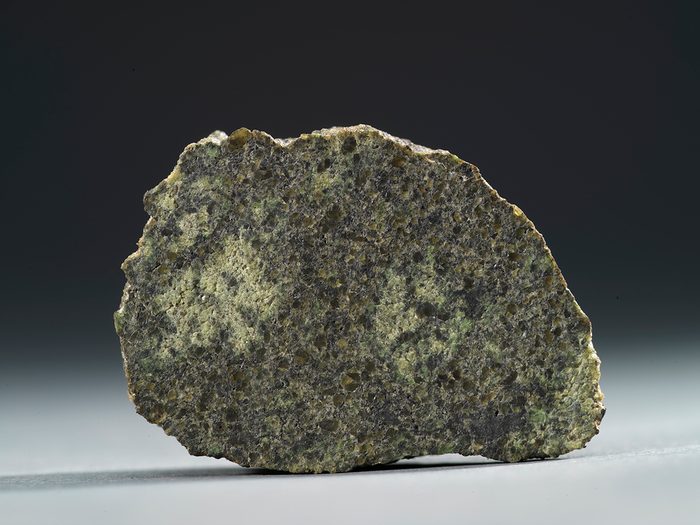
A chunk of Mars that fell to Earth
Where you’ll find it: Royal Ontario Museum, Toronto
A manned mission to Mars is still a ways off, but you can still get close to pieces of the red planet. Dislodged from the Martian surface by the impact of an asteroid or comet and pulled towards our orbit, there are a grand total of 22 Martian meteorites in the Royal Ontario Museum’s collection. (That’s a fifth of all such specimens ever recovered on Earth.)
Keeping your eyes peeled for the next one? Here are the best places for stargazing across Canada.
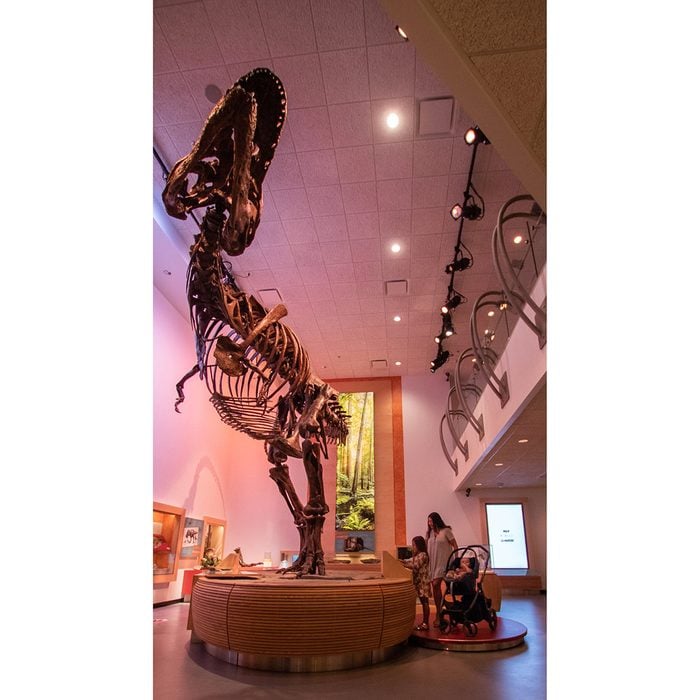
The world’s largest T. rex
Where you’ll find it: Royal Saskatchewan Museum, Regina
Dubbed “Scotty” after the celebratory bottle of scotch used to toast the find, this replica is based on the original skeleton of a 67-million-year-old Tyrannosaurus rex. The fossil was discovered in 1991 by a science teacher and a team of paleontologists near Eastend, Saskatchewan. Now recognized as the world’s largest T. rex, this heavyweight weighed in at 8,800 kilograms.
Here are the best places to see dinosaur fossils across Canada.

A nod to neon history
Where you’ll find it: Neon Sign Museum, Edmonton
The heyday of neon is celebrated in this Instagram-worthy open-air museum on Edmonton’s 104 Street. The collection features 23 (with more being added yearly) vintage commercial signs dating back decades. Donations are coordinated by the city’s Heritage Planning department and are restored and installed by members of the Alberta Sign Association.
Discover 10 unforgettable day trips from Edmonton.

John Lennon’s psychedelic Rolls Royce
Where you’ll find it: Royal BC Museum, Victoria
How does a souped-up Rolls Royce owned by John Lennon end up in a Canadian museum? The 1965 Phantom V Touring Limousine commissioned by the ex-Beatle was donated by Canadian businessman Jim Pattison, who had purchased it at auction for more than $2 million. The bad news about this cool car? It’s only on display in the quieter winter months.
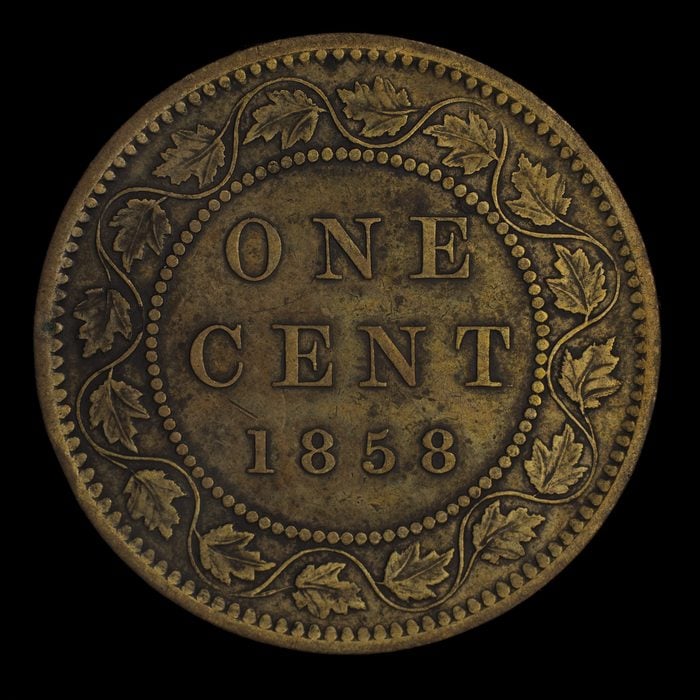
The first Canadian one cent coin
Where you’ll find it: Bank of Canada Museum, Ottawa
It was in for a penny and out with the pound when coins bearing the word “Canada” were issued for the first time in 1858. The revised Currency Act of 1857 decreed the Province of Canada (then Ontario and Quebec) would split with the British system of pounds and shillings and that all provincial accounts be kept in dollars and coin issues denominated in cents.
Read the fascinating tale of how the Bluenose ended up on Canada’s 10-cent piece.

The first Canadarm in space
Where you’ll find it: Canadian Space and Aviation Museum, Ottawa
Developed by Toronto-based SPAR Aerospace Ltd., five of these iconic robotic arms were delivered to NASA for use in the Space Shuttle program between 1981 and 1993. Canadarm 201 made its debut aboard the second-ever mission, Space Shuttle Columbia, on November 13, 1981. It completed 23 flights and travelled nearly 100 million miles in orbit before being added the museum’s permanent display.
Discover more Canadian contributions to the exploration of space.

An 800-year-old footprint
Where you’ll find it: Canadian Museum for Human Rights, Winnipeg
This bronze cast of a moccasin print is a true step back in time. One of 400,000 artifacts discovered during an archeological excavation of the museum’s site in 2008, it is the oldest footprint found at The Forks, ancestral lands on Treaty One territory, where the Red and Assiniboine rivers meet.
Here are 50 more fantastic things to do in Winnipeg.

The trophy for Canada’s first Kentucky Derby win
Where you’ll find it: Canadian Museum of History, Gatineau, Quebec
A record-setting two-minute race elevated Northern Dancer from winning racehorse to Canadian superstar. On May 2, 1964, the colt became the first Canadian-bred horse to win the prestigious Kentucky Derby. The first non-human to be inducted into the Canadian Sports Hall of Fame, Northern Dancer is considered the most influential sire of the 20th century, fathering 143 stakes winners.
Discover more hidden gems across Canada.
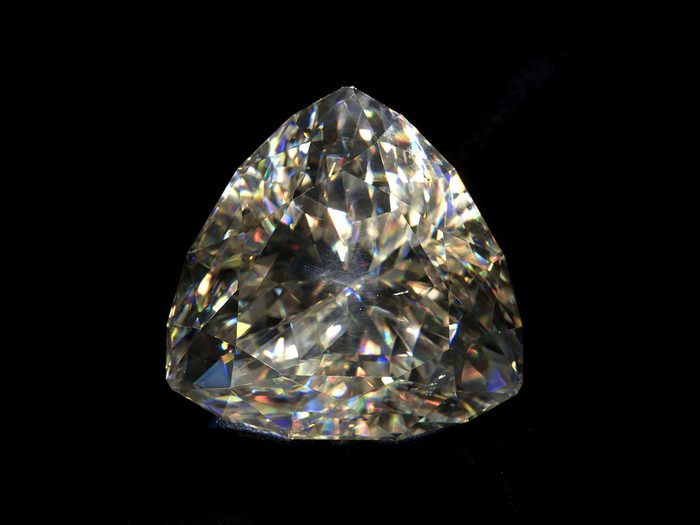
The world’s largest faceted cerussite
Where you’ll find it: Royal Ontario Museum, Toronto
Diamonds may be a girl’s best friend, but the ROM’s 898-carat Light of the Desert cerussite outshines them in two ways. First, in terms of rarity: it’s incredibly unusual to see a mineral as delicate as cerussite cut and polished into a finished stone. Second, in terms of “dispersion” (also known as “fire”) which is the gem’s ability to reflect light to create a kaleidoscope effect.
Discover the strangest fact about every Canadian province.

Sir Isaac Brock’s coat (with bullet hole)
Where you’ll find it: Canadian War Museum, Ottawa
Commander of Upper Canada’s troops during the War of 1812, Major-General Sir Isaac Brock’s conspicuous officer’s uniform may have been his undoing. Brock was shot in the chest while leading the charge against the Americans during the Battle of Queenston Heights. The hole from the musket ball is visible below the left lapel.
Find out why historians call 1816 “the year without a summer.”

The world’s largest Barbie exhibition
Where you’ll find it: Barbie Expo, Montreal
It’s a Barbie world at this collection featuring 1,000-plus incarnations of the iconic doll (and a few Kens). The exhibit includes one-of-a-kind, Hollywood-inspired and luxe-label (Dior, Versace, Armani) Barbies as well as 28 dressed by renowned costumer and designer to the stars, Bob Mackie.
Explore 10 quirky Canadian museums.

A Cold War fallout shelter
Where you’ll find it: Diefenbunker, Canada’s Cold War Museum, Ottawa
Nicknamed the Diefenbunker, this underground shelter was commissioned by Prime Minister John Diefenbaker in 1959 to house key officials in the event of a nuclear attack. Until it was decommissioned in 1994, the pantries of the 100,000-square-foot space were stocked with enough fresh food and rations to feed 535 people for 30 days.
Check out more great day trips from Ottawa.

A wreath made from human hair
Where you’ll find it: Thunder Bay Museum, Thunder Bay, Ontario
Popular as décor during the 18th and 19th centuries, locks from loved ones were collected and woven into intricate patterns to make necklaces and brooches. Larger pieces often included hair from multiple family members, like this wreath (circa 1838) made from the tresses of a mother and her eight daughters from nearby Prescott, Ontario.
Discover more hidden gems in Ontario.

Canada’s largest blue whale skeleton
Where you’ll find it: Beaty Biodiversity Museum, University of British Columbia, Vancouver
Blue whales rarely strand on beaches, which is why intact skeletons are hard to come by. “Big Blue” was a mature female when she washed ashore on the remote northwestern coast of Prince Edward Island in 1987. An estimated 80,000 kilograms and 26 metres long, this specimen is the largest of its kind in Canada, and one of only 21 on display worldwide.
Check out the best day trips from Vancouver.
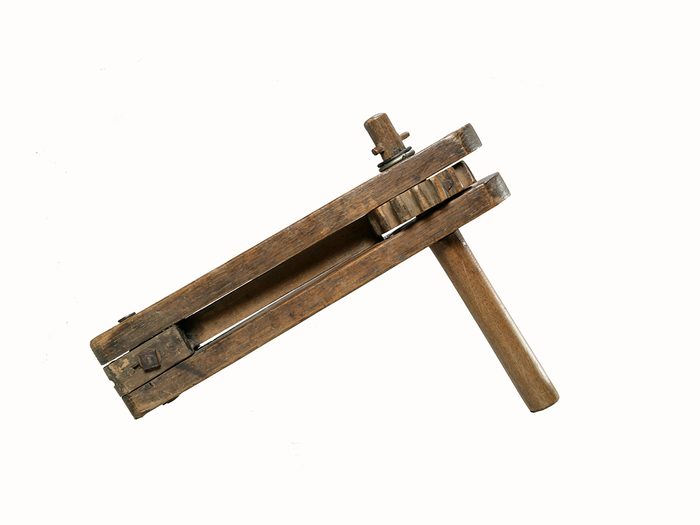
A life-saving noisemaker
Where you’ll find it: Canadian War Museum, Ottawa
This wooden rattle was a literal lifesaver. Used by British Empire troops during the First World War, this hand-operated device produced a loud rattling sound to warn of impending chemical gas attacks. The alert gave terrified soldiers enough time to don their respirators to avoid death or chemical burns.
Here are 10 historical landmarks every Canadian needs to visit.

A haunted toy
Where you’ll find it: Prince Edward Island Museum and Heritage Foundation, Charlottetown
In 2020, England’s Yorkshire Museum took to Twitter, inviting curators around the world to share their #creepiestobject. The Prince Edward Island Museum and Heritage Foundation responded with “Wheelie,” a late 19th-century stuffed toy rumoured to be haunted. Found on the grounds of Historic Yeo House (open only during the summer), staff say when they put the small, three-wheeled dog on the floor, they’ll later find it in another spot.
Don’t miss our roundup of the most haunted places in Canada.

The first commercial snowmobile
Where you’ll find it: J. Armand Bombardier Museum of Ingenuity, Valcourt, Quebec
To overcome the isolation of rural Quebec in winter, Joseph-Armand Bombardier, a mechanic from Valcourt, designed a vehicle that could travel over rough, snow-covered terrain. In 1937 he unveiled a seven-passenger snowmobile that used a sprocket/wheel track system. By 1939 Bombardier had 100 orders for the B7 from utility companies, forestry operations and postal services.
Read the incredible story of the Fossmobile—Canada’s first gas-powered automobile.

A gift from a hockey great to great Canadian
Where you’ll find it: BC Sports Hall of Fame and Museum, BC Place, Vancouver
On April 12, 1980, Terry Fox dipped his prosthetic leg in the Atlantic Ocean, embarking on his cross-country run to raise money and awareness for cancer research. This signed Oilers jersey worn by hockey great Wayne Gretzky was given to Fox during his inspirational Marathon of Hope which raised $24.2 million for the Canadian Cancer Society.
Put your knowledge to the test with our Canadian heroes quiz.